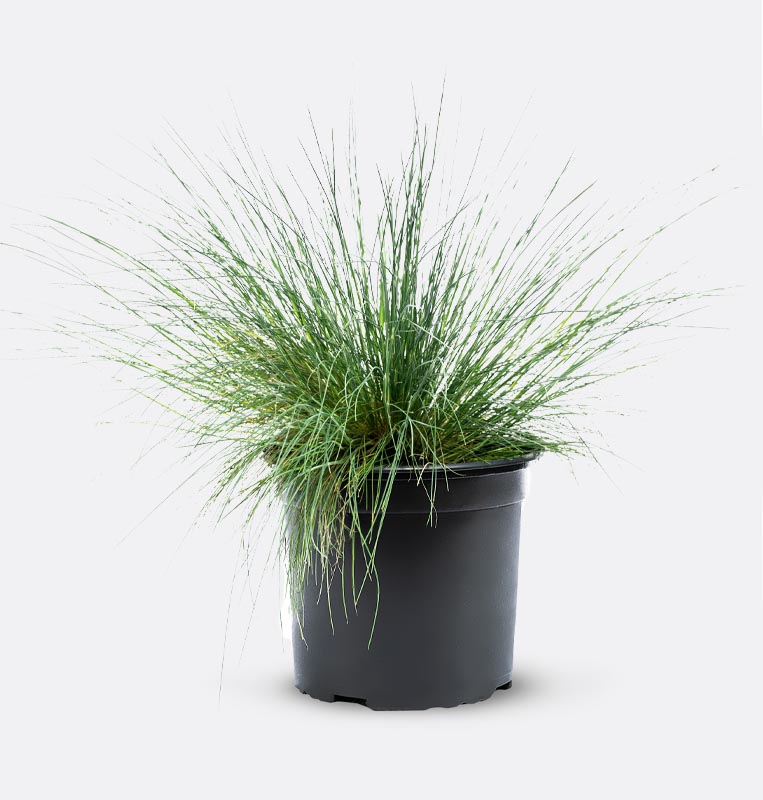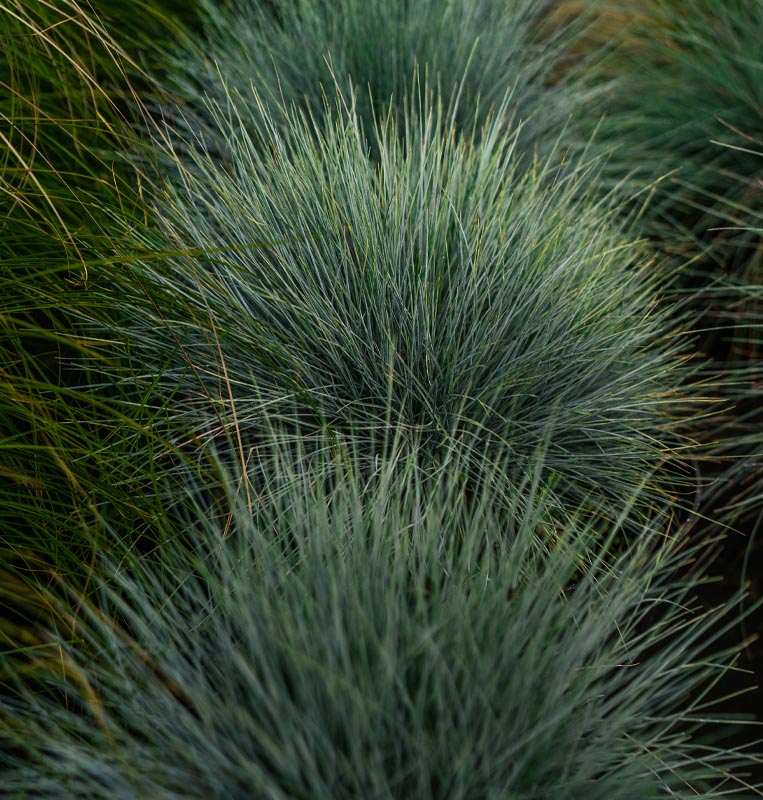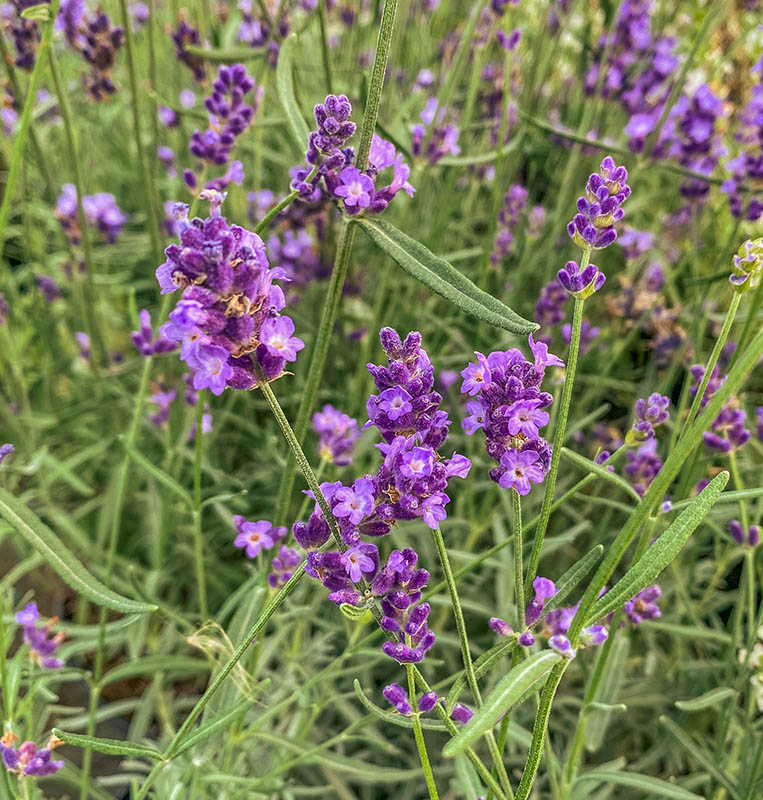Planting for the Changing Environment
Future-proofing your landscape
Climate change is affecting our planet in a number of ways; it’s warming up, rainfall patterns are changing, and sea levels are significantly rising. This devastating combination of changes leads to an increased risk of flooding, droughts, heatwaves and fires. During the winter months, we are seeing warmer temperatures with fewer frosts, and these climatic changes are impacting plants’ growing seasons and performance. The stress of severe heatwaves and longer droughts is impacting plant quality, productivity and performance.
When plants are under stress from climate change, they can experience a decrease in their natural resiliency to other factors, such as pollution, habitat loss and invasive alien species. Invasive species are able to thrive and spread in areas outside of their natural habitat, and are a threat to our native plants. With the temperatures rising, milder winters help invasive alien species to survive and populate faster than ever before.
Shifting temperatures and precipitation patterns will lead to unpredictable and longer growing seasons. This could bring a disruption to pollinators, birds, and other wildlife, as plants may come into leaf or flower earlier than expected, so interactions between pollinators and birds with plants can become out of sync. Pollinators rely on a diverse range of plants with different flowering times throughout the year, and this places particular pollinators at a higher risk of extinction. The decline in species population has a knock-on effect on others; we are currently in a biodiversity crisis as the world is losing species at such a rapid rate.
What can we do to help combat the changing climate?
With global warming happening at such a fast rate, we should be thinking about ways in which we can make a difference and fight climate change; a great way to do this is by efficiently planting and caring for trees. Trees benefit our climate by providing oxygen and locking up carbon from the Earth’s atmosphere, through photosynthesis. Trees also help to protect against the devastating effects of our changing climate—including flooding, rising temperatures, and pollution. The Woodland Trust estimates that our UK trees are valued at an astounding £6.5 billion for flood protection, and £6.1 billion for urban cooling.
Planting trees and shrubs creates precious havens for wildlife and encourages biodiversity. They are invaluable to local wildlife, such as birds, insects and mammals, who use them for food and nesting. In addition, pollinator diversity can be supported by including a diverse range of trees and plants with different flowering times, as well as a variety of native, near-native and exotic plants.
Avoiding the use of peat is a further way to help with climate change. Peat is mined from peatlands—the UK’s largest semi-natural habitats—and this process is having a detrimental effect on our planet. Peatlands are carbon sinks and sequester around 33% of our global carbon dioxide; if they become severely degraded, they act as a carbon source, rather than a carbon sink. Each year, damaged peatlands across the planet emit at least two billion tonnes of CO2 into the atmosphere. As part of the Government’s plan to tackle climate change and promote biodiversity, thousands of hectares of vital peatland will be restored in the coming years. If 35,000 hectares of peatland is successfully restored, it could prevent 9 million tonnes of CO2 from being released into the atmosphere by 2050.


How will our gardens and landscapes change?
The changing environment—such as the drought and extreme temperatures we experienced last summer—could result in choosing plants which are better suited to higher temperatures and long periods of drought. The aim will be to future-proof green spaces so that they are able to cope with these conditions that we are likely to experience more of in the future.
Due to the longer mowing season and required irrigation, lawns are likely to become less popular due to the maintenance associated with them. In place of lawns, we may see an increase in gravel gardens, natural meadows and xeriscaping. Xeriscaping involves the design of landscapes to reduce or eliminate future watering, by planting drought-tolerant species amongst soil, mulch and rocks.
We may see fewer annuals and more hardy perennials and shrubs in the future, due to the high maintenance involved in planting, watering, and removing annuals each year. Perennials offer higher value and less maintenance; they are the garden gift that keeps on giving. Furthermore, perennials and shrubs contribute significantly towards the ecosystem and encourage biodiversity, without causing excessive disruption. The move towards drought-tolerant plants in the future could also result in a decrease in bedding and annuals, as these generally require more water to help them thrive.
Mediterranean style planting is becoming increasingly popular, as these species are well adapted to dry climates. There are many drought-tolerant Mediterranean plants which perform well in sunny, well-drained spots. Some species have oily surfaces on the leaves, to protect them from harsh sun rays, whilst others have hairy foliage that traps moist air. Silver or grey-green leaved species are particularly effective for reflecting strong sun rays.
Our drought-tolerant plant recommendations
Abelia × grandiflora
Abelia × grandiflora (glossy abelia) is a long-flowering shrub with beautiful, arching branches. It has masses of nectar-rich, fragrant, bell-shaped, pale-pink flowers throughout summer and glossy, deep green foliage. Abelia × grandiflora is great when positioned in the back of sunny borders.

Abelia × grandiflora

Abelia × grandiflora
Ceanothus
Commonly known as California lilac, Ceanothus is a fast-growing shrub and can be either evergreen or deciduous, depending on the variety. ‘Blue Mound’ is one of our favourites with its dense clusters of showstopping, bright blue flowerheads in late spring. Ceanothus are easy to grow and work well as groundcover, informal hedges or planted in borders.
Euphorbia characias subsp. wulfenii
Euphorbia characias subsp. wulfenii (Mediterranean spurge) is an upright, medium-sized shrub with large heads of vibrant, lime green flowers in spring and oblong, grey-green foliage on stiff stems. It brings structure to landscapes with its natural, rounded shape and looks great in flower beds and borders.

Euphorbia characias subsp. wulfenii
Festuca glauca
A striking ornamental grass, Festuca glauca (blue fescue) tolerates drought once established and provides interesting texture. When positioned in full sun, Festuca glauca turns a beautiful shade of blue-green, which it is well known for. One of our favourite varieties is ‘Elijah Blue’ with its intense blue foliage and blue-green flower plumes in summer.

Festuca glauca ‘Elijah Blue’

Festuca glauca ‘Elijah Blue’
Hylotelephium
Previously known as Sedum, Hylotelephium (stonecrop) is a herbaceous perennial with fleshy foliage that effectively stores water. Hylotelephium has flat flower heads which are made up of small, star-shaped flowers and are thoroughly enjoyed by butterflies and bees. As well as its striking blooms, its foliage and stems can be a range of colours, including green, bronze and burgundy—depending on the variety. Hylotelephium dies back in winter, but its stiff stems provide lovely structural winter interest. One of our favourite varieties is Hylotelephium spectabile ‘Brilliant’, with its grey-green foliage and large, flat heads of bright pink flowers in late summer and autumn.

Hylotelephium spectabile ‘Brilliant’
Lavandula
A fantastic option for pollinator biodiversity, Lavandula are fantastic, easy to grow, drought-tolerant plants which look great in gravel gardens. A couple of our favourite lavenders are Lavandula angustifolia ‘Hidcote’ and Lavandula angustifolia ‘Munstead’. ‘Hidcote’ is a bushy, low hedging plant with lovely grey-green foliage and dark purple, highly scented flower spikes in summer. ‘Munstead’ is a compact, aromatic shrub with grey-green leaves and spikes of violet, summer flowers.

Lavandula angustifolia ‘Munstead’

Lavandula angustifolia ‘Hidcote’
Myrtus communis
Commonly known as myrtle, Myrtus communis is a large, evergreen, upright shrub with a rounded form. It has small, shiny, ovate leaves and showy, fragrant, fluffy, white flowers in summer, followed by blue-black autumnal berries. Myrtus communis is fantastic when grown as hedging or screens. Growing up to 3m, it’s a lovely backdrop for other plants and can be positioned against a wall.
Osteospermum jucundum
Osteospermum jucundum, or commonly known as African daisy, originate from Africa and are great drought-tolerant perennials. Growing up to 45cm in height, Osteospermum jucundum have semi-evergreen grey-green leaves and individual, light purple daisies with deep purple centres throughout summer and autumn. Great for growing in flower borders, beds and containers.

Myrtus communis Forest & Kim Starr, CC BY 3.0
Contact our expert G Team if you need advice on planting for the changing environment, or head to our innovative Tender Tool app to get a quick and easy quote.

